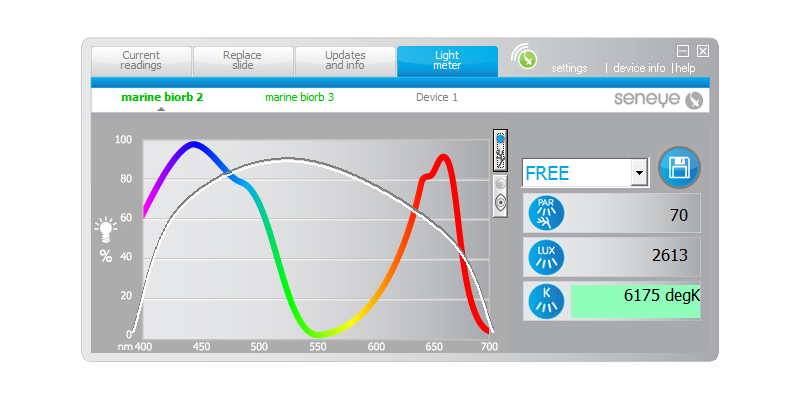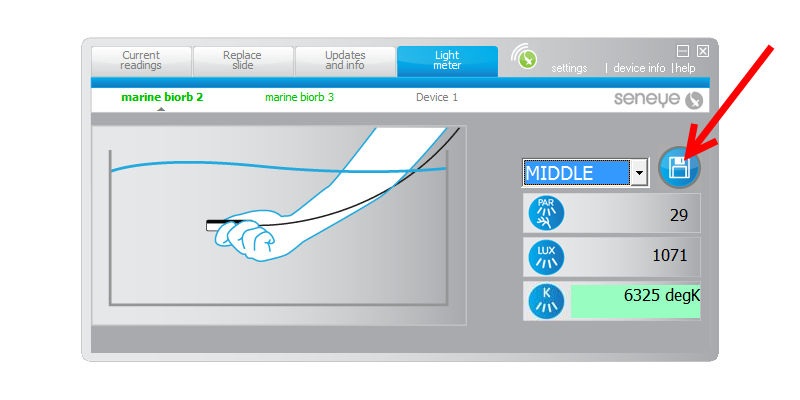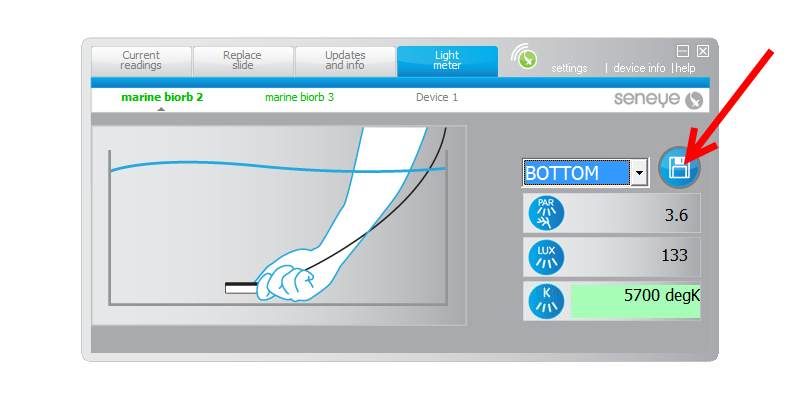seneye reef light meter functions
Table of contents
[MISSING: System.API.no-headers]To use the seneye light meter you must first understand the light levels will change depending on the position of the sensor relative to the light source. For example if left in the top corner the light readings will be very low and not representive of the light recieved by corals and plants in different areas.
The light sensor is located on the back of the seneye device as a round clear window. It is essential that this is kept clean so readings are accurate. To ensure the device is clean always rub it with your finger tip and rinse off, then examine it. Always face this window at the light source you wish to measure at a na appropriate position.
Now you can start saving readings and in the next passage we explain what the features of the seneye connect application SCA do. Below is the light tab that should be present on your seneye reef. (other models can be upgraded at the seneye store). PAR, LUX and Kelvin are output as values in the boxes on the right. These will change as you move the device up and down and side to side in the aquarium. This is important to understand as different plants and coral have different requirements, you will be amazed how much light will change. We recommend you move the seneye device around slowly so the values have plenty of time to react and update. The graph which changes is three point based on Red Green And Blue. It performs like a very simple spectra graph and is extremly useful when there is no kelvin from the light to indicate wavelength bias and quality for purpose.
By clicking the button shown by the red arrow you can show the human eye response curve. This is useful to remind us that green light is most readily absorbed in the eye. Therefore aquarium lamps giving large green portions will look brighter and misslead you. Green light is not used much by plants even though it is measured in PAR terms (another good reason that the spectra graph helps understand light quality).
The next button of interest (shown by the red arrow) adds a PAR curve this helps us better understand what light is used by plants in photosynthesis. Excess light shown above the line may not be usefull for photosynthesis and is likely to be reflected. Hence plants look green.
The screen below shows both overlays selected. 
You can use the save button (shown by the red arrow) to record special 'free' light readings. Don't forget light is logged every 30 minutes but its values will depend on loaction. A free light reading is in no specific location. Once clicked the button will count down so it is a good idea to have the seneye device in postion prior to pressing.
Once count down is complete a box will appear and ask you to name the reading. We recommend you do this with somthing that will help you remember what it is i.e. coral type and or location.
Once saved the reading will be uploaded to seneye.me and stored. You can then compare this with other coarls you or a friend may have and work out which conditions best suit it. There is also a feature to log light readings at the top, middle and bottom of the tank. This is especially useful for tracking light systems as they age, all lights drop in output the longer they are used. You will also be able to see any improvements you make to lighting systems. The levels shown below are for a real aquarium with a low cost led system.
For information on correct marine PAR levels for coral click here.
For information on correct PAR levels for fresh water plants click here.










